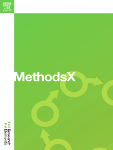Ver ítem
- xmlui.general.dspace_homeCentros e Institutos de InvestigaciónCICVyA. Centro de Investigación en Ciencias Veterinarias y AgronómicasInstituto de GenéticaArtículos científicosxmlui.ArtifactBrowser.ItemViewer.trail
- Inicio
- Centros e Institutos de Investigación
- CICVyA. Centro de Investigación en Ciencias Veterinarias y Agronómicas
- Instituto de Genética
- Artículos científicos
- Ver ítem
Methodology for the identification of relevant loci for milk traits in dairy cattle, using machine learning algorithms
Resumen
Machine learning methods were considered efficient in identifying single nucleotide polymorphisms (SNP) underlying a trait of interest. This study aimed to construct predictive models using machine learning algorithms, to identify loci that best explain the variance in milk traits of dairy cattle. Further objectives involved validating the results by comparison with reported relevant regions and retrieving the pathways overrepresented by the genes
[ver mas...]
Machine learning methods were considered efficient in identifying single nucleotide polymorphisms (SNP) underlying a trait of interest. This study aimed to construct predictive models using machine learning algorithms, to identify loci that best explain the variance in milk traits of dairy cattle. Further objectives involved validating the results by comparison with reported relevant regions and retrieving the pathways overrepresented by the genes flanking relevant SNPs. Regression models using XGBoost (XGB), LightGBM (LGB), and Random Forest (RF) algorithms were trained using estimated breeding values for milk production (EBVM), milk fat content (EBVF) and milk protein content (EBVP) as phenotypes and genotypes on 40417 SNPs as predictor variables. To evaluate their efficiency, metrics for actual vs. predicted values were determined in validation folds (XGB and LGB) and out-of-bag data (RF). Less than 4500 relevant SNPs were retrieved for each trait. Among the genes flanking them, signaling and transmembrane transporter activities were overrepresented.
The models trained:
•Predicted breeding values for animals not included in the dataset.
•Were efficient in identifying a subset of SNPs explaining phenotypic variation.
The results obtained using XGB and LGB algorithms agreed with previous results. Therefore, the method proposed could be applied for future association studies on milk traits.
[Cerrar]

Autor
Raschia, Maria Agustina;
Ríos, Pablo Javier;
Maizon, Daniel Omar;
Demitrio, Daniel Arturo;
Poli, Mario Andres;
Fuente
MethodsX 9 : 101733 (2022)
Fecha
2022
Editorial
Elsevier
ISSN
2215-0161
Documentos Relacionados
Formato
pdf
Tipo de documento
artículo
Proyectos
(ver más)
INTA/2019-PE-E6-I145-001/2019-PE-E6-I145-001/AR./Mejora genética objetiva para aumentar la eficiencia de los sistemas de producción animal.
INTA/2019-PT-E9-I180-001/2019-PT-E9-I180-001/AR./TICs y gestión de Big Data
INTA/2019-PT-E6-I513-001/2019-PT-E6-I513-001/AR./Plataforma de mejoramiento animal
Palabras Claves
Derechos de acceso
Abierto
 Excepto donde se diga explicitamente, este item se publica bajo la siguiente descripción: Creative Commons Attribution-NonCommercial-ShareAlike 2.5 Unported (CC BY-NC-SA 2.5)
Excepto donde se diga explicitamente, este item se publica bajo la siguiente descripción: Creative Commons Attribution-NonCommercial-ShareAlike 2.5 Unported (CC BY-NC-SA 2.5)


